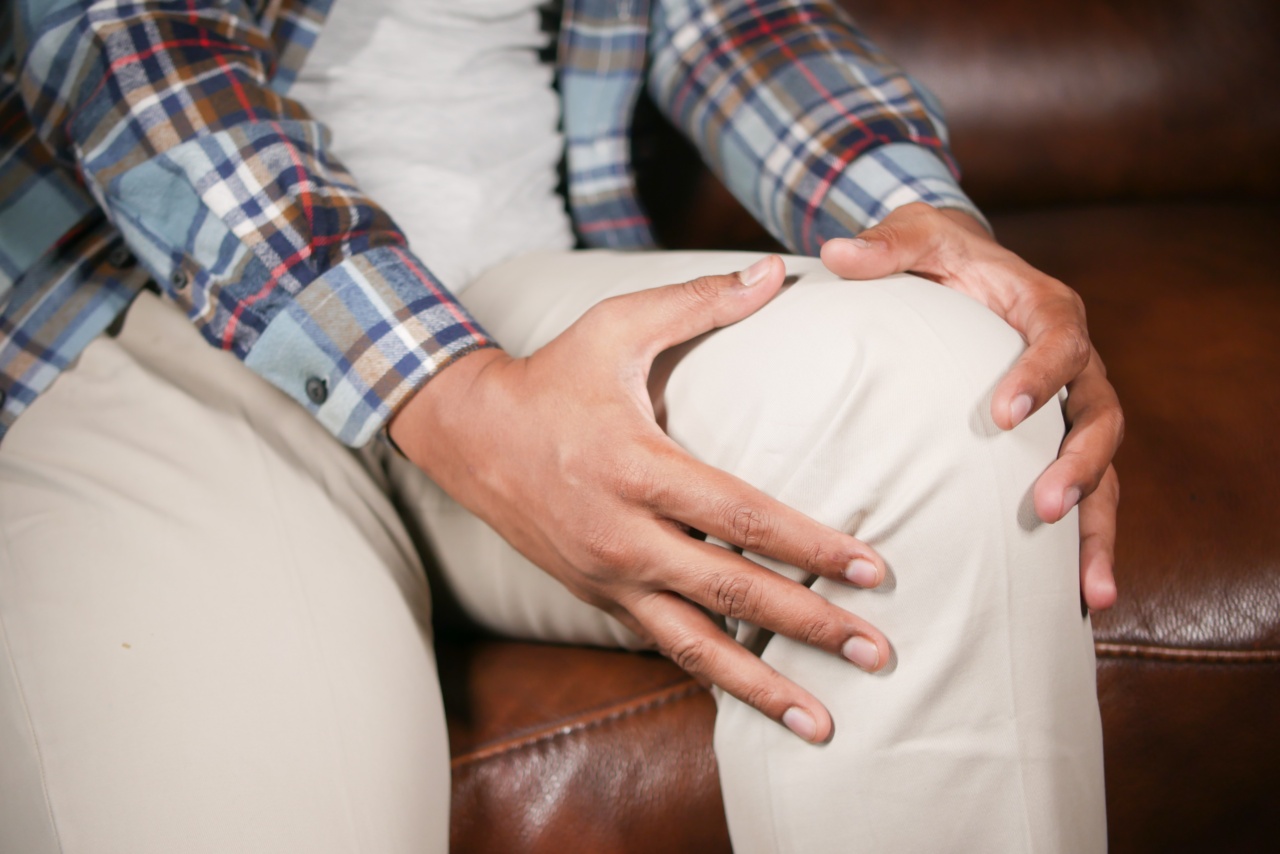When it comes to our overall health, one of the most common complaints that people experience is knee pain. The knees are remarkable joints that play a vital role in supporting our body weight and facilitating movement.
However, they are also vulnerable to injuries and various conditions that can cause discomfort and restrict our mobility. Understanding the causes and potential implications of knee pain is crucial for seeking appropriate treatment and maintaining optimal health.
Common Causes of Knee Pain
There are numerous factors that can contribute to knee pain. Some of the most common causes include:.
1. Osteoarthritis
Osteoarthritis is a degenerative joint disease that primarily affects the elderly. It occurs when the protective cartilage that cushions the ends of the bones within the joint wears down over time.
This can result in pain, stiffness, and swelling in the knees.
2. Ligament Injuries
Ligament injuries, such as a tear in the anterior cruciate ligament (ACL) or medial collateral ligament (MCL), often occur during sports activities or accidents.
These injuries can cause severe pain, instability, and difficulty with walking or bearing weight.
3. Meniscus Tears
The meniscus is a C-shaped piece of cartilage that acts as a shock absorber in the knee joint. Tears in the meniscus can happen due to sudden twisting or pivoting movements, leading to pain, swelling, and limited range of motion.
4. Bursitis
Bursitis is inflammation of the bursae, which are small fluid-filled sacs that cushion the joints. When the knee bursae become irritated or infected, it can result in pain, swelling, and warmth around the affected area.
5. Tendinitis
Tendinitis refers to inflammation or irritation of the tendons, which are the thick cords that attach muscles to bones. When tendons around the knee become inflamed, it can cause pain, tenderness, and difficulty with movement.
6. Patellar Tracking Disorder
Patellar tracking disorder occurs when the patella (kneecap) shifts out of its normal alignment. This can cause pain, a popping sensation, and instability in the knee joint.
7. Osgood-Schlatter Disease
Osgood-Schlatter disease is a common cause of knee pain in young adolescents. It is characterized by inflammation of the patellar tendon where it attaches to the tibia, resulting in pain, swelling, and tenderness just below the kneecap.
8. Rheumatoid Arthritis
Rheumatoid arthritis is an autoimmune disease that causes chronic inflammation in the joints, including the knees. It can lead to pain, joint deformity, and difficulty with daily activities.
9. Gout
Gout is a form of arthritis that occurs due to the buildup of uric acid crystals in the joints. When the knee joint is affected by gout, it can cause sudden and intense pain, redness, and swelling.
10. Overuse or Repetitive Strain
Frequent and repetitive activities that involve bending the knees, such as running or jumping, can lead to overuse injuries. These injuries are often characterized by persistent pain and inflammation in the knee joint.
Potential Implications of Knee Pain
Knee pain can significantly impact a person’s quality of life and overall health. Without proper diagnosis and treatment, it can lead to the following implications:.
1. Limited Mobility
Severe knee pain can limit your ability to walk, climb stairs, or perform daily activities, affecting your mobility and independence.
2. Muscle Weakness
When knee pain prevents you from engaging in physical activities, it can lead to muscle weakness and atrophy in the surrounding leg muscles.
3. Weight Gain
Inability to exercise due to knee pain may contribute to weight gain, which can put additional strain on the knees and exacerbate the pain.
4. Poor Posture
Changes in gait caused by knee pain can lead to compensation patterns and poor posture, potentially causing imbalances in other parts of the body.
5. Emotional Impact
Living with persistent knee pain can take a toll on mental health, leading to feelings of frustration, depression, and anxiety.
Seeking Treatment for Knee Pain
Since knee pain can have various causes, it is essential to consult a healthcare professional for an accurate diagnosis and appropriate treatment. Depending on the underlying condition, treatment options may include:.
1. Medications
Over-the-counter pain relievers or prescription medications may be recommended to manage pain and reduce inflammation.
2. Physical Therapy
A physical therapist can design a personalized exercise program to strengthen the muscles around the knee joint, improve flexibility, and promote healing.
3. Assistive Devices
Using crutches, braces, or orthotic devices can provide support and alleviate stress on the knees.
4. Injections
Corticosteroid injections may be administered directly into the knee joint to reduce inflammation and pain.
5. Surgical Intervention
In severe cases or when conservative treatments fail, surgical procedures like arthroscopy, knee replacement, or ligament repair may be necessary.
Preventing Knee Pain
While some causes of knee pain may be unavoidable, certain preventive measures can be taken to reduce the risk. These include:.
1. Maintaining a Healthy Weight
Excess body weight puts increased stress on the knees, so maintaining a healthy weight can alleviate strain and reduce the likelihood of developing knee pain.
2. Regular Exercise
Engaging in low-impact exercises, such as swimming or cycling, can strengthen the muscles around the knee joint and provide better support.
3. Warming Up and Stretching
Prior to engaging in physical activities or sports, it is crucial to warm up the muscles and perform stretching exercises to prevent muscle strains and injuries.
4. Proper Footwear
Wearing appropriate footwear with good arch support and cushioning can distribute weight evenly and reduce stress on the knees.
5. Avoiding Overuse
Listen to your body and avoid repetitive activities that can strain the knees. Take regular breaks and vary your exercise routine to prevent overuse injuries.
Conclusion
Knee pain should never be ignored, as it can have a significant impact on your daily life and overall health.
By understanding the common causes, potential implications, and available treatment options, you can effectively manage knee pain and maintain optimal well-being. Remember to seek professional medical advice if you experience persistent or worsening knee pain.



























